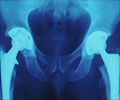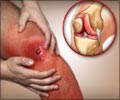Treatment of Oligoarthritis
In order to effectively treat arthritis in children, a team of medical professions comprising of physicians, nurses, paramedical staff (physiotherapists, occupational therapists, dieticians) pediatric rheumatologists work together. It is very essential for the parents to extend their cooperation to enjoy the benefit of the multi-faceted treatment.
Pain and inflammation relieving drugs are usually given. This class of medications is usually called non-steroidal anti-inflammatory drugs (NSAIDs).
Another class of drugs that need special mention in this regard is the use of disease modifying anti rheumatoid drugs (DMARDs). These drugs in addition to reducing the infection prevent further progress of the disease. Latest development in the drug treatment is the use of novel agents called ‘biologics’. Corticosteroid injections may be directly given into the affected joints. It can ensure prevention of uneven length of legs. This kind of treatment however may not suit every child. The steroids or immunosuppressive agents should not be used in this group of patients.
The physiotherapist can suggest some exercises to strengthen the muscles, maintain the flexibility of the joint. It may also be possible in some cases to achieve normal limb growth.
In addition to the above-mentioned treatments, regular eye check ups are vital to preserve and protect vision. If eye damage has already occurred, cortisone eye drops are given to treat the associated uveitis.
Role of Alternative Therapies
Diet Supplements: The known forms of diet supplements that claim to provide relief for arthritis can provide moderate relief only for adults suffering from osteoarthritis. This however is also associated with side effects. No observed clinical benefit has so far been documented in the treatment of childhood arthritis with any of the dietary supplements.
Fish Oil: Fish oil contains a rich source of Omega-3 fatty acids and this substance can reduce inflammation. However, in order to observe real benefit, many capsules have to be consumed. It has now been found that this protective effect may only be temporary, not exceeding 6 months.
















